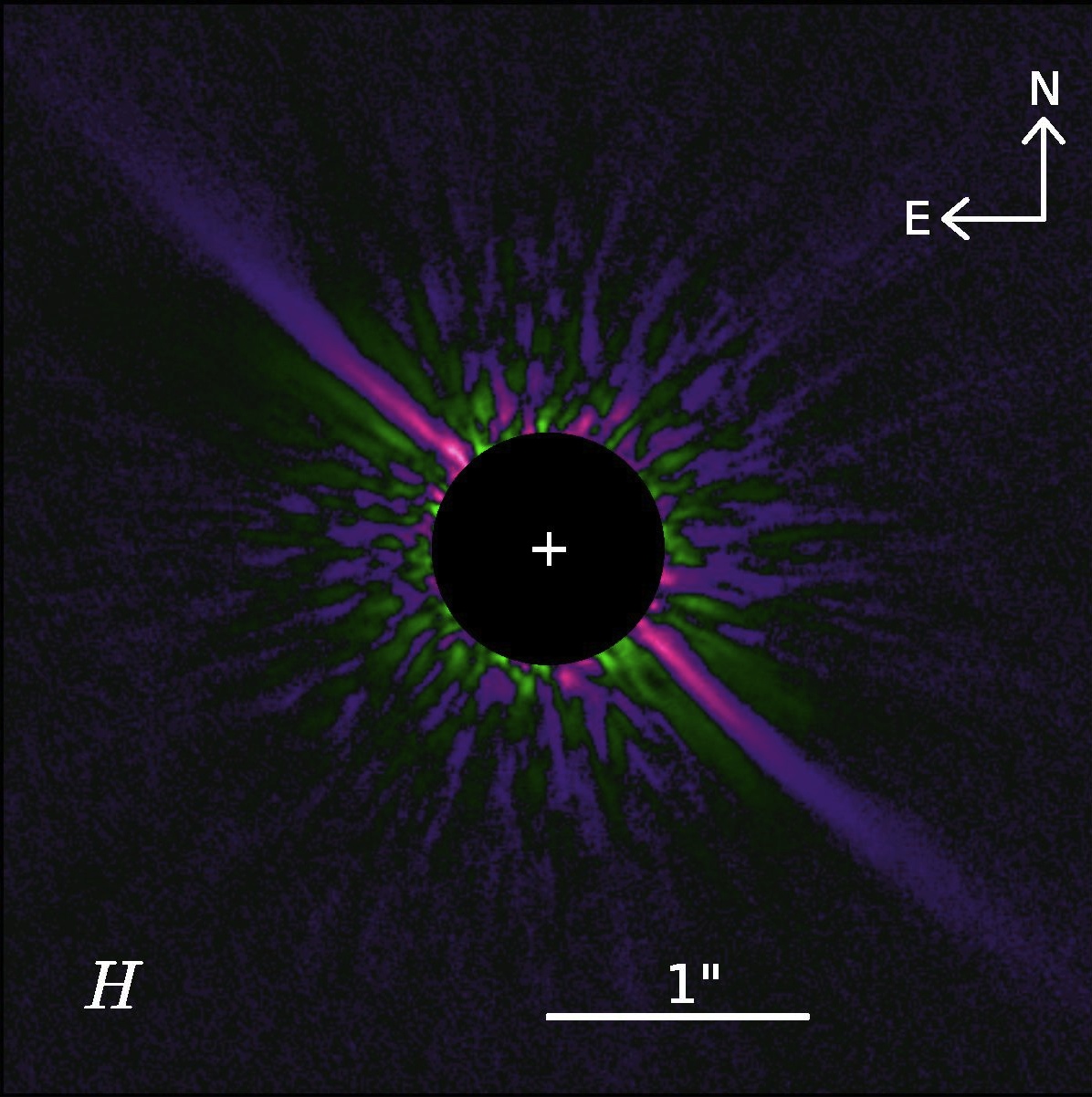Under Construction...
Debris Disks
Circumstellar debris disks represent a stage of planetary system evolution thought to be concurrent with terrestrial planet formation. These disks primarily consist of dust and rock ranging from submicron-sized grains to kilometer-sized planetesimals.
Imaging debris disks in the near-infrared probes the distribution of the micron-sized grains via scattered starlight. Structures in the dust, such as clumps, gaps, asymmetries, and warps, act as signposts of planets that have gravitationally perturbed the dust. Thus, debris disks provide information about the formation and evolution of these systems. They also offer the opportunity to indirectly detect planets unobservable by other means.
For more information on debris disks, this Wikipedia article is a decent starting point.
